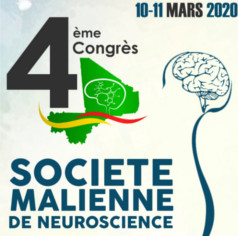Speaker
Description
Introduction: The biochemical effects of chronic administration of Zidovudine on intracranial auditory relay centre of adult Wistar rats has been studied and reported.
Goal: To investigate how the oxidative stress and antioxidant enzymes biomarkers in the tissues of intracranial visual relay centre of zidovudine-treated group compare with non-treated group.
Materials and Methods: As in the study on auditory functions, the rats of both sexes (N=40), with an average weight of 200g were randomly assigned into treatment (n1=20) and control (n2=20) groups. The rats in the treatment group received 300mg / 70kg (0.857mg/200g) body weight of zidovudine being the dosages required twice daily dissolved in distilled water daily and given for thirty days through orogastric tube administration While the control rats received equal volume of distilled water through the same route and for the same period. Catalase, glucose-6-phosphate dehydrogenase, glutathione peroxidase, lactate dehydrogenase and superoxide dismutase; as well as malondialdehyde were tested in the superior colliculus and lateral geniculate body tissues.
Results: Malondialdehyde as a non-enzyme biomarker of oxidative stress as well as glutathione peroxidase and superoxide dismutase activities are higher on the treated superior colliculus, but lower in lateral geniculate body, with statistical significant (P<0.05) difference observed.
Conclusion: The effects of zidovudine on antioxidant enzymes and oxidative stress in superior colliculus and lateral geniculate body of adult Wistar rats are discordant. Further studies are required to investigate whether enzymology and oxidative stress tests could be useful to ascertain zidovudine efficacy and toxicity on visual relay centers.
REFERENCES
1.Acosta EP, Page LM and Fletcher CV. Clinical pharmacokinetics of zidovudine. An update. Clin Pharmacokinet 1996;30(4):251-62.
2.Duesberg PH. The role of drugs in the origin of aids. Biomed Pharmacother 1992;46(1):3-15.
3.Gulick RM, Ribaudo HJ, Shikuma CM, Lalama C, Schackman BR, Meyer Wr et al.
Three- vs four-drug antiretroviral regimens for the initial treatment of hiv-1 infection: A
randomized controlled trial. JAMA 2006;296(7):769-81.
4.Panel on Antiretroviral Guidelines for Adults and Adolescents Guidelines for the use of antiretroviral agents in HIV-1-infected adults and adolescents. Available at http://aidsinfo.nih.gov/contentfiles/lvguidelines/adultandadolescentgl.pdf. Accessed 19th Dec 2013.
5.Campbell TB, Smeaton LM, Kumarasamy N, Flanigan T, Klingman KL, Firnhaber C et al. Efficacy and safety of three antiretroviral regimens for initial treatment of hiv-1: A randomized clinical trial in diverse multinational settings. PLoS Med 2012;9(8):e1001290.

